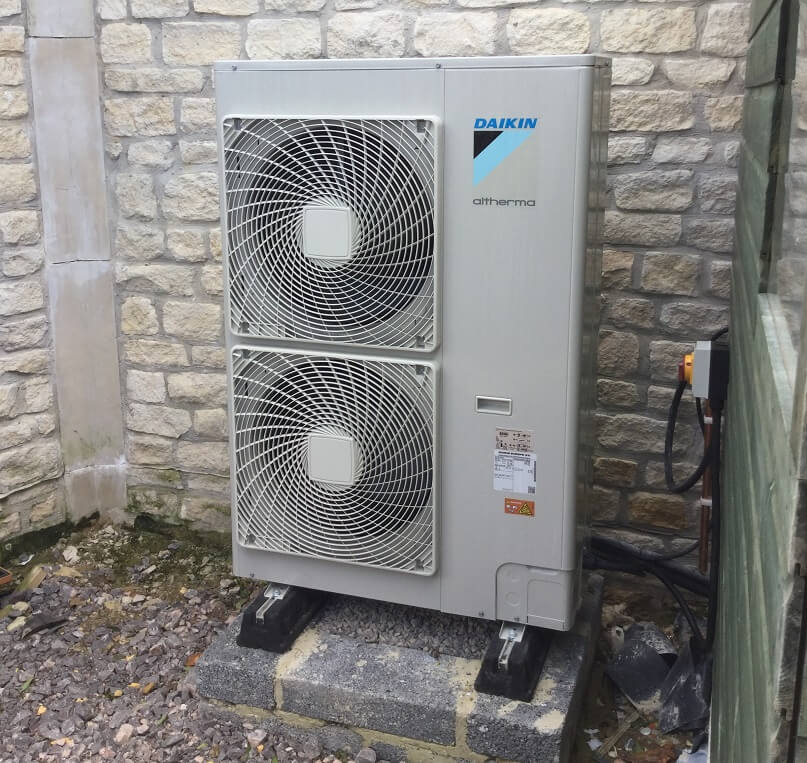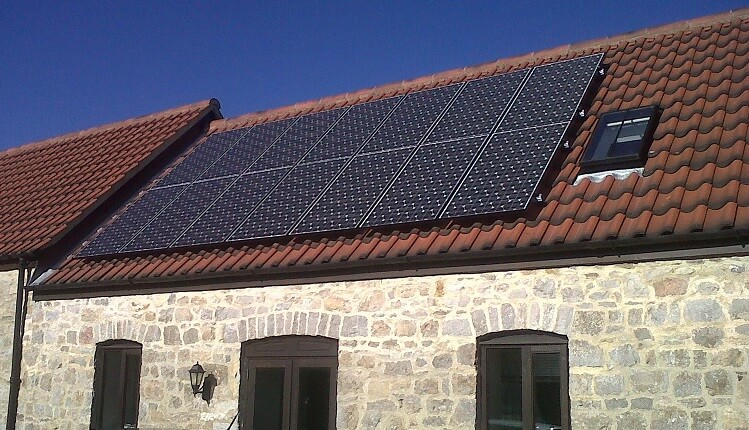If you are considering installing a renewable technology such as solar PV, solar thermal or heat pump, as a way to save money and do your bit to help the environment, here are few things to consider with each one, as each solution is not for everyone.
Solar PV
As one of the most tried and tested technologies around Solar PV is a safe bet.
First to deal with a little urban myth. The hotter the day the greater the performance, right?
Wrong.
Did you know that an air temperature of between 18 and 22 degrees range is optimum for Solar PV. Anything hotter than that and you really won’t get maximum performance from them.
At high temperatures they, in fact, generate their own energy shield to protect from temperatures over 30 degrees so don’t work efficiently in really hot weather at all.
Another common misconception is PV can run heat during winter months but it can’t although this is where storage options such as batteries come into their own.
That said, it still is a sensible choice to consider solar panels. Let’s face it if our winters are getting milder, during the lighter, better days the generation from panels is going to increase compared to even 10 years ago.
On a clear, sunny, warm day the average 3KW system will generate 3KW or operate at maximum capacity. This will drop to 95% with wispy clouds and if warm but cloudy to around half or 1.5KW energy, this is still enough to keep things running.
Choose solar PV: if you have a south facing roof free from obstructions (e.g. large chimney or a big tree). Get a free quote by filling in questionnaire
Heat pumps
What many people don’t understand about heat pumps is that they work best on low temperatures. It’s a big job to undertake and your property must be properly insulated before even considering putting in heat pumps.
Heat pumps operate at an average 45 degrees (compared to boilers at an average 70 degrees) so need bigger a surface area to process.
Another sticking point is the insulation. In order to qualify for the existing BUS grant of £5K towards a heat pump installation you have to have insulation.
Be that cavity wall insulation, double glazing or decent roof insulation or all three, in an ideal world. If your EPC suggests insulation is needed, this must be addressed before you proceed with heat pump installation.
If your property has solid walls you would need to internally insulate or externally clad or else the heat loss will be too high for the heat pump to operate efficiently.
Another thing to take into account is that if you are retro-fitting an existing property and heating system you need to consider most of radiators will be need to up-sized. Many people do not realise the extra considerations needed here.
Installing heat pumps is a science in itself. Any good surveyor needs to calculate the potential heat loss of the building, determine the size and make recommendations for a feasible way forward.
Choose Heat Pump if: you have the correct insulation and the space to expand. Get a free survey by filling in our questionnaire.

Whatever heating solution you cboose, the renewable team’s top energy saving top tip is…
“Ensure your Radiators have thermostatic bulbs. Use energy saving controls and have decent level of roof insulation. If you can envelope your house if heat and do your best to ensure it’s not escaping, it will help reduce the costs.”
For more information about renewable heating solutions visit our specialist website


